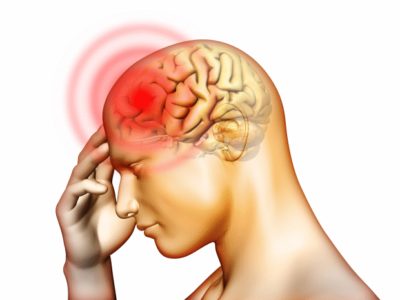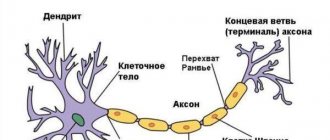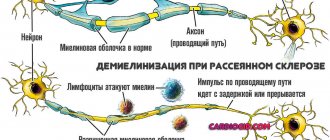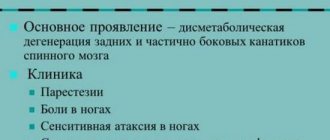The ICD includes a large group of transient conditions and diseases of the brain, spinal cord and peripheral nerves as perinatal lesions of the nervous system in newborns (PPNSL).
The impact of a damaging factor in the perinatal period: from 22 weeks of gestation to 7 days of life, including childbirth itself, allows us to combine this pathology into a general group.
↯
More articles in the magazine
“Deputy Chief Physician”
Activate access
What is this code?
ICD-10 is the international classification of diseases, tenth revision . The full transcript looks like this: international statistical classification of diseases and health-related problems.
Reference! The World Health Organization was responsible for compiling the ICD. The classification consists of 21 classes of diseases. Classes are divided into blocks. Coding is alphanumeric. Thanks to the ICD, you can recognize all diseases of any system or organ.
Symptoms (signs)
Clinical picture • Feeling of insufficient sleep • Presomnia disorders - inability to fall asleep at the patient’s usual time, often accompanied by anxiety, fear and obsessive thoughts • Intrasomnia disorders - superficial anxious sleep with frequent awakenings • Postsomnia disorders - when falling asleep satisfactorily, the patient wakes up several hours earlier than usual and then either cannot fall back to sleep or falls into a restless, unsatisfying sleep. Often observed in the elderly and in depression • Lack of recuperation after sleep • Drowsiness and drowsiness during the day • Fatigue • Anxiety before bedtime.
ICD-10 meningitis code G00-G09
Inflammatory diseases of the central nervous system.
G00
Bacterial meningitis, not elsewhere classified.
Bacterial meningitis:

Arachnoiditis.- Meningitis.
- Meningitis.
- Pachymeningitis.
Excluded: bacterial:
- Meningoencephalitis (G04.2).
- Meningomyelitis (G04.2).
Classified by:
- G00.0 Influenza – inflammation caused by Haemophilus influenzae.
- G00.1 Pneumococcal.
- G00.2 Streptococcal.
- G00.3 Staphylococcal.
G00.8
Meningitis caused by other bacteria. In particular, the disease caused by Friedlander's bacillus.
Attention! Meningitis caused by other bacteria is diagnosed 55.09% more often in men than in women.
G00.9
Bacterial meningitis, unspecified.
Bacterial meningitis, unspecified, is a disease of the nervous system class. Inflammatory diseases of the central nervous system, has disease code: G00.9. Bacterial meningitis, unspecified, is distinguished :
- purulent NOS;
- pyogenic NOS;
- pyogenic NOS.
Treatment
There is a certain paradox: OPCNS are persistent and lifelong. Timely and competent treatment of the cause, or underlying disease, can lead to the fact that the organic lesion simply does not form. On the other hand, if a massive focus of necrosis has already appeared in the brain due to a major stroke, then this change occurs immediately and forever, since it is determined by the pathogenesis of the disease itself.
If it is unknown whether there will be any consequences or not, then they are not talked about yet: therefore, while a person is sick, for example, with meningitis, and this underlying disease is being treated, then there is no diagnosis of OPCNSL, and there is nothing to treat.
Only after a year or more, if the complaints persist, the presence of an organic lesion is detected, and the treatment also becomes “chronic” in nature. Organic consequences and changes tend to occur in waves, with periods of exacerbations and remissions. Therefore, the treatment is palliative. Sometimes they say that symptomatic treatment is carried out, since this process is lifelong. You can get used to it, but you can get rid of it only by transplanting a new head.
Meningitis G02
Meningitis in other infectious and parasitic diseases is formed when:

anthrax (A22.8+);- gonococcal (A54.8+);
- leptospirosis (A27.-+);
- listeriosis (A32.1+);
- Lyme disease (A69.2+);
- meningococcal (A39.0+);
- neurosyphilis (A52.1+);
- salmonellosis (A02.2+);
- syphilis:
- congenital (A50.4+);
- secondary (A51.4+).
- tuberculosis (A17);
- typhoid fever (A01.0+).
Excluded: meningoencephalitis and meningomyelitis due to bacterial diseases classified elsewhere (G05.0*).
G02.0
Meningitis in viral diseases. Excluded: meningoencephalitis and meningomyelitis in infectious and parasitic diseases classified elsewhere (G05-G05.2*).
G02.1
Meningitis due to mycoses. Included :
- candidiasis (B37.5+);
- for coccidioidomycosis (B38.4+);
- cryptococcal (B45.1+).
G02.8
ICD-10 meningitis in other specified infectious and parasitic diseases classified in other headings.
Important! Meningitis in other specified infectious and parasitic diseases is a health disorder belonging to the group of inflammatory diseases of the central nervous system.
Inflammation caused by:
- African trypanosomiasis (B56.-+);
- Chagas disease (B57.4+).
Causes
Etiology • Psychotraumatic situations • Somatic and neurological diseases that cause physical discomfort and are accompanied by pain • Mental illnesses, especially accompanied by depressive states • Substance abuse (alcohol, caffeine, nicotine, psychostimulants, narcotic substances), drugs (dietary supplements, decongestants and antitussives, GC, theophylline, phenytoin) and the resulting withdrawal symptoms • Heavy smoking • Obstructive sleep apnea syndrome • Disturbance of the rhythm of sleep and wakefulness (rapid jet lag, night shift work, damage to the hypothalamus due to head injury or encephalitis).
Risk factors • Chronic diseases • Old age • Obesity • Taking drugs of various groups in large quantities.
ICD-10 G03

- arachnoiditis;
- meningitis;
- meningitis;
- pachymeningitis.
Excluded:
- meningoencephalitis (G04.-);
- meningomyelitis (G04.-).
G03.0
This ICD-10 code is for non-pyogenic meningitis.
Nonbacterial inflammatory process. Diagnosis with code G03 includes 5 clarifying diagnoses :
- G03.1 Chronic meningitis.
- G03.2 Benign recurrent meningitis (Mollaret).
- G03.8 Meningitis caused by other specified pathogens.
- G03.9 Meningitis, unspecified.
- Arachnoiditis (spinal) NOS.
Diagnosis does not include:
- meningoencephalitis (G04.-);
- meningomyelitis (G04.-).
Definition of OPCNS
Organic brain damage is a persistent disorder of both the structure of the brain and its individual functions, which manifests itself in various symptoms, is irreversible, and is based on morphological changes in the central nervous system.
This means that all brain diseases in adults and children, including young children, can be divided into two large groups:
- functional disorders. They do not have any morphological substrate. In simple words, this means that, despite complaints, according to all examination data, MRI, lumbar puncture and other research methods, no pathological changes are detected.
Such diseases, for example, include vegetative-vascular dystonia with diencephalic crises, or migraine headaches. Despite a thorough ultrasound of both the cerebral vessels and the vessels of the head and neck, no pathology may be detected. This is due to a sharp change in vascular tone, which leads to severe, throbbing pain with nausea and vomiting, against the background of normal test results.
- organic pathology. It “leaves traces” that are discovered many years later. All the pathophysiological mechanisms of its occurrence are known: for example, acute ischemia, or perinatal damage to the central nervous system in a child of the first year of life. Persistent changes are caused by the inflammatory process, both on the membranes of the brain and in the brain itself.
Therefore, if the patient’s complaints can be “linked” to any specific disease or brain damage in the past, and also if these complaints are associated with disturbances in the structure of the brain substance (for example, according to MRI data), which are persistent, then The patient is given a diagnosis, for example:
“Organic brain disease of complex origin: a residual period of extensive ischemic stroke in the middle cerebral artery, severe right-sided hemiparesis, motor aphasia, consequences of closed craniocerebral injury, post-traumatic encephalopathy, moderate cognitive impairment against the background of severe cerebral atherosclerosis.”
As you can see, there is “no place to put samples.” Usually, after such a main diagnosis there is a list of related ones: hypertension, diabetes, obesity, and so on. But it is immediately clear what reasons led to the development of OPCNSL.
We have given an example of organic damage to the central nervous system associated with stroke and trauma, occurring against the background of atherosclerosis in an elderly person. What diseases in general are associated with the subsequent appearance and development of organic disorders?
Types of organic lesions
In order not to bore the reader with a detailed description of diseases that “leave” a lasting mark on the patient’s life in the form of organic brain damage, we will briefly list these reasons.
You just need to remember that all the diseases listed below can be cured without a trace, without any consequences . In addition, the patient may have persistent changes in the structure of the brain, for example, a cyst of the septum pellucidum in a child, or calcification of the caudate nucleus, which may be an incidental finding on an MRI performed just for fun.
So what does this mean that the patient has an organic lesion? This is where the most interesting part of the story begins: purely formally, morphologically, from the point of view of pathological anatomy - yes. But, since the patient does not complain, neurologists do not give him any diagnosis. In addition, if these changes in the brain occurred quietly and asymptomatically, and one of the following diagnoses was not documented, then the basis for OPCNSL does not seem to exist.
Therefore, an organic lesion is identified in the presence of structural changes and corresponding complaints and symptoms . Individual components are “not taken into account.”
However, there is one disease in which there may be no significant changes according to neuroimaging data, and the diagnosis will still sound like OPCNSL. This is a long-term (20-30 days) stay of the patient in a comatose state caused by a metabolic rather than a destructive coma. This period is quite enough for lifelong disorders to appear caused by hypoxia, which cannot be “seen.” So, here is a list of the most common reasons:
- acute cerebrovascular accidents. These include ischemic and hemorrhagic strokes, intracerebral hemorrhages, and, to a lesser extent, subarachnoid and subdural hematomas. If the hematoma is removed in a timely manner, everything can go away without a trace. In addition, there are disorders of the spinal and cerebrospinal circulation. Spinal stroke with consequences is also a sign of OPCN;
- Parkinson's disease, parkinsonism syndrome, hyperkinesis, damage to the basal ganglia: globus pallidus, putamen, substantia nigra, caudate and red nucleus (subcortical structures have amazing names);
- episyndrome. It should be clarified that true epilepsy is not OPCNSL, since it occurs “from nowhere”, and it is called “cryptogenic” or “genuine”. If there are seizures as a manifestation of another disease - for example, parasitic cysts (cysticercosis of the brain), or after a depressed fracture of the bones of the calvarium, with impaired consciousness, mental syndromes - this is an episyndrome;
- meningitis, arachnoiditis, encephalitis and meningoencephalitis, especially purulent (for example, meningococcal and pneumococcal in young children). The morphological substrate for the occurrence of persistent disorders is the formation of adhesions on the membranes, as well as inside the liquor-conducting tracts (with ependymatitis and ventriculitis). With encephalitis - destruction of certain areas of the cortex, with replacement by connective tissue;
- specific infections: neurosyphilis, tuberculosis;
- herpetic lesions of the nervous system, poliomyelitis;
- secondary damage to systemic collagenoses (for example, rheumatism). In children and adults, vasculitis, meningitis, encephalitis and encephalomyelitis may occur;
- brain tumors;
- parasitic infestations;
- injuries, including penetrating injuries, brain contusion and diffuse axonal injury;
- toxic damage (salts of heavy metals, alcoholism).
Description
Sleep disorders are quite widespread phenomena. Between 8 and 15% of the world's adult population report frequent or persistent complaints of poor or insufficient sleep, between 9 and 11% of adults use sedative-hypnotics, and this percentage is significantly higher among older people. Sleep disorders can develop at any age. Some of them are more common in certain age groups, such as bedwetting, night terrors and somnambulism in children and adolescents, and insomnia or pathological sleepiness in middle-aged and older people. Other disorders, such as narcolepsy-cataplexy syndrome, may begin in childhood and persist throughout life.










